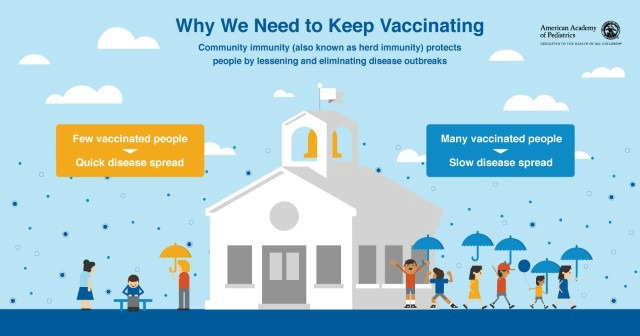By: Wendy Sue Swanson, MD, MBE, FAAP
From the moment we become parents, we work to keep our children's environment safe. We child-proof our homes and make sure poisons and dangerous objects are secured wherever our kids spend time. But we aren't always as diligent about making sure the community spaces where our children learn and play are protected from threats we can't see, like infectious diseases.
How healthy is your state?
Every parent should know if their child resides, learns and plays in a safe environment. Knowing their child's "world" is up-to-date on vaccines is an important data point, and knowing where your community stands just got a little easier!
The AAP interactive infographic is a great, high-level view into knowing how your state fares with status on vaccines and protections from outbreaks of infections like measles and pertussis, as well as influenza.

Knowing how your community is doing on vaccines and speaking up about what you believe matters. More than ever before, clearly making it known that you vaccinate your child and that you want your child to be surrounded by people that do the same is essential.
Check out your state's data in the AAP infographic. Get even deeper into the data with online resources like School Digger that allows you to look at vaccine data at the school level.
Pediatricians and parents can partner unlike ever before and with tools unlike we've ever had to make sure the spaces where our children spend their days are as safe as possible. Speak up, ask about rates at your schools, and tell other parents how much you value vaccines that protect your children and their friends.
More information
About Dr. Swanson
 Wendy Sue Swanson, MD, MBE, FAAP, is a member of the American Academy of Pediatrics Council on Communications and the Media and the author of Mama Doc Medicine.
Wendy Sue Swanson, MD, MBE, FAAP, is a member of the American Academy of Pediatrics Council on Communications and the Media and the author of Mama Doc Medicine.